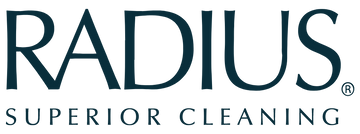At RADIUS, we believe that caring for your smile should also mean caring for the planet. One of the small but meaningful ways you can do that is by properly disposing of your toothbrushes when they’ve done their job. Since many brushes end up in landfill, it’s time to rethink what happens when you say goodbye to that old brush. This guide walks you through eco-friendly ways to dispose of or recycle toothbrushes and how to choose products from RADIUS that make that process easier and greener.
Why Proper Disposal Matters
To understand the importance, consider this: a standard toothbrush is made of mixed materials, plastic handle, nylon bristles, sometimes metal parts, and colored dyes. Most conventional brushes are entirely discarded once used, which leads to:
-
Plastic waste that doesn’t break down easily in landfills
-
Microplastic pollution in soil and waterways as bristles degrade
-
Resource waste when durable handles are thrown out instead of reused
By choosing brush types designed for replaceable parts, natural/vegan materials, or recyclable elements, you reduce environmental impact. Your daily habit of brushing can become a small act of sustainability.
Key Considerations for Dental Tool Disposal
When your toothbrush is spent or its head is worn, consider these things before tossing it:
-
Can you remove and recycle just the head?
If the handle is still usable, replacing only the head reduces plastic and overall waste. -
What is the bristle material?
Bristles are often nylon, which is difficult to recycle. Some eco-programs accept brush heads with mixed components if the bristles are removed or cut beforehand. -
Is the handle material durable or recyclable?
Materials that last long without breaking reduce total waste. Handles designed to be reused contribute to better environmental outcomes. -
Are there take-back or recycling programs?
Some brands and local recycling centers accept oral care items. It’s worth checking with local waste management or eco-schemes.
RADIUS Designs with Disposal in Mind
RADIUS products are built with sustainability and health in mind. Here are two that simplify recycling or reuse:
-
RADIUS Source Toothbrush with Replaceable Head
This design lets you keep the handle and only replace the worn head. A durable handle means fewer discarded parts, and replaceable heads help reduce overall plastic waste. -
RADIUS Big Brush with Replaceable Head
Similarly, these brushes are designed so that the soft bristle head is swapped out, while the handle stays in use. The softness helps protect gums while wear is isolated to the head.
These product designs make eco-friendly disposal more practical, because fewer full brushes are discarded and there’s less mixed material waste.
How to Recycle or Dispose Responsibly
Here are clear steps you can follow when your toothbrush head has had its life and needs to be replaced:
-
Separate the head from the handle
If using one of the RADIUS replaceable-head models, remove the old head cleanly. This allows the handle to stay in use longer. -
Check local recycling guidelines
Many municipal recycling programs don’t accept bristle materials or mixed plastic. Some accept rigid plastics if the bristles are removed. Research your local rules or drop-off options. -
Find specialized recycling programs
Some eco-organizations collect radiant waste like oral care: say, mixed materials, bristles, handles. Even if there’s a small fee or shipping involved, participating supports larger waste diversion. -
Repurpose when possible
Old toothbrush handles can be repurposed as cleaning tools for tile grout, small crevices, or gardening tools. The bristle head, though worn, may still be useful for light cleaning tasks like polishing hardware or cleaning hard-to-reach spots, before final disposal. -
Dispose of worn heads properly
If the head cannot be recycled, cut off the bristles first and wrap the head in a small paper envelope or bag. Then dispose responsibly in a non-mixed plastic bag where required by your local rules.
Tips to Extend the Life of Your Brush Head
Longer lifespans mean fewer brushes in the trash. Here’s how to prolong your brush’s useful life:
-
Rinse thoroughly and let your brush head dry upright. Dampness accelerates wear.
-
Brush gently not aggressively. Softer bristle brushes (as RADIUS provides) designed with gentle materials wear more slowly.
-
Don’t use it for non-oral tasks (like cleaning—avoid scraping or using it against harsh surfaces).
-
Replace heads when the bristles are splayed or flattened—it’s less about age, more about how well it cleans.
What to Avoid Doing
-
Don’t throw plastic handles or brush heads blindly into recycling bins unless your local facility accepts them. Contaminated items can cause processing issues.
-
Don’t try to compost synthetic bristles—they don’t break down well in standard compost systems.
-
Avoid shredding bristles in places they could enter waterways.
The Big Picture: Collective Impact
If every brush user replaced just the head rather than tossing the whole brush, plastic waste would drop significantly. Choosing recyclable packaging, handles that last, plant-based materials, and dispose-or-recycle practices, together make large impact.
Every small eco-step matters: when multiplied across households, communities, and the world, it adds up to less waste, better water, cleaner soil, and ultimately, a happier planet—and healthier mouths for all of us.
Final Thoughts
Recycling your toothbrush—or better yet, choosing one designed to minimize waste—is an easy habit with lasting benefit. RADIUS is committed to offering designs and products that respect your teeth, your gums, and the earth beneath your feet.
Next time you change out a brush head, remember: choosing reuse, choosing plant-based materials, choosing responsible disposal all bring you one step closer to a cleaner mouth and a cleaner planet.
Small actions at the sink make big waves elsewhere—and your smile will be all the brighter for it.

